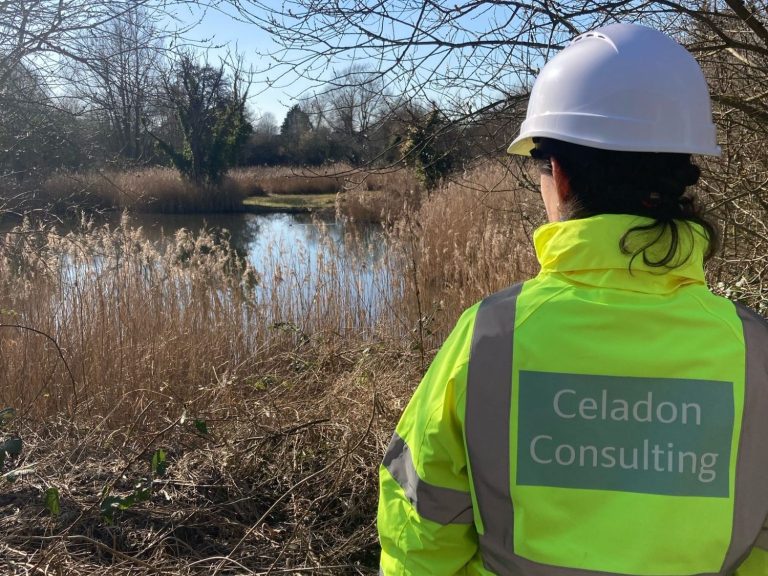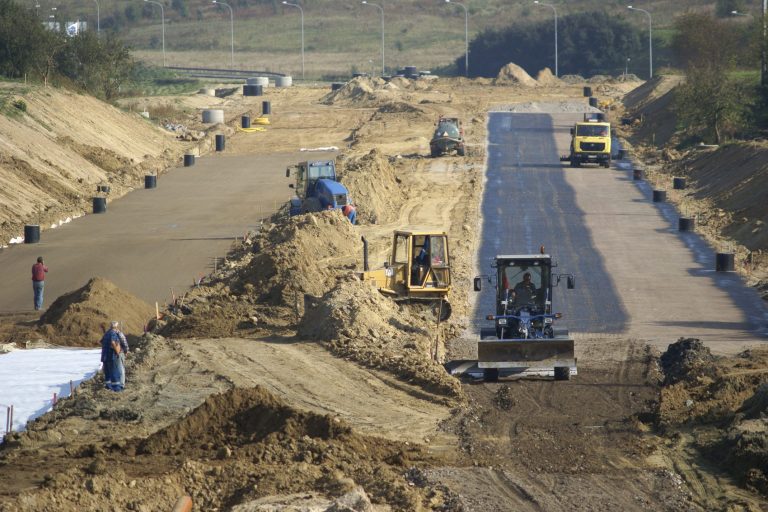
Andrea Hughes - Director
Andrea has been working in the field of environmental management for over 25 years.
During this time she has worked on several large scale multi-phased, long-term projects requiring both the collation of management plans and a continuing on-site presence to oversee their implementation.
She has also authored numerous management plans for works within or adjacent to Sites of Special Scientific Interest (SSSI), Special Protection Areas (SPA) and Special Areas of Conservation (SAC) including coastal areas, ancient woodland, waterways and meadow land.
Andrea specialises in the protection and delivery of Blue-Green Infrastructure (BGI).
Credentials:
25+ years in Environmental Assessment
20+ years in Environmental Management
15+ years in On-site Environmental Auditing
Chartered Environmentalist
Fellow of the Institution of Environmental Sciences
BSc Environmental Biology
MSc Ecotoxicology and Pollution Monitoring
Member of the Society for the Environment
Member of Institute of Air Quality Management
Member of Constructing Excellence Herts and Beds
CSCS Professionally Qualified Person
CIRIA Trained
Technical Member of the British Society of Soil Science
What is CEMP?
A CEMP is a 'Construction Environmental Management Plan'. These are often requested to support a planning application. They are typically required to control potential impacts such as noise, dust, silty run-off, construction traffic and lighting, and to protect surrounding ecology and cultural heritage. CEMPs are intended to ensure that the surrounding environment will not be impacted whilst the consented works take place.
What is CEMP Biodiversity?
Some projects are located either within or adjacent to an area of particularly sensitive ecology such as a Site of Special Scientific Interest (SSSI), a Special Protection Area (SPA), a Special Area of Conservation (SAC), a Site of Importance for Nature Conservation (SINC) or simply a Local Nature Reserve (LNR). In these situations the CEMP needs to demonstrate more specifically how the identified biodiversity features will be protected. This may involve a requirement for fencing, buffers and sensitive working practices, or it may include for translocation of plants or animals prior to works taking place.
At Celadon Consulting Ltd we are experienced in the provision of CEMPs for small urban developments, large multi-phased projects, and everything in-between.




What is BGI?
Blue-Green Infrastructure (BGI) refers to areas such as parks, meadows, rivers, ponds and woodlands. It is often a blend of accessible, natural and built elements, which provide environmental and societal benefits.
In 2018 the Government published it's 25 Year Environmental Improvement Plan to increase the country's 'natural capital'. This included a commitment that the public should be able to access green space or water within a 15-minute walk from their home. This has been a driver for Natural England's 2023 Green Infrastructure Framework, which provides guidance for the successful implementation of BGI within schemes such as Local Nature Recovery Strategies and Biodiversity Net Gain (BNG). Alongside this, the ICE Manual of BGI, also published in 2023, provides key considerations in BGI design, creation, retrofitting and maintenance.
At Celadon we specialise in the protection and delivery of BGI within the construction process.
What we do
At Celadon, we use experience and expertise to aid clients in navigating their environmental responsibilities both prior to and during works, but also within the wider context of business and education.

Construction Environmental Management
Construction Environment Management Plans must be written to account for the specifics of the site, the details of the works and the concerns of the Statutory Authorities.
They must also be live, working documents, accounting for the protocols and constraints of the contractor.
Our CEMP documents are bespoke and as such enable the contractor to protect the sensitivities of the environment within the time and cost constraints which are an inevitable element of the build process.

Environmental
Site Audits
Environmental Site Audits measure the success of the CEMP, the understanding of the workforce and the suitability of the mitigations in place. They offer an opportunity to learn from Site Managers and where necessary, to adapt the management plan to better fit evolving site conditions.
Celadon offer a site audit package which ensures the success of the construction environmental management process by examining its implementation on the ground.

BAP Priority Habitat & Species Protection
Habitats and species which are the subject of Biodiversity Action Plans (BAP) require additional recognition and protection during works.
We use the expert guidance within supporting documents to ensure that works are tailored to BAP requirements. This may be via appropriate timing, training of operatives, or the use of physical barriers.

Materials Management Planning
When soils are excavated during construction without the necessary forethought, these are at risk of being considered 'waste' by the authorities and subject to the requirement for (and cost of) removal to landfill.
Appropriate and timely application of the CL:ARE Definition of Waste Code of Practice (DoWCoP) in the form of Materials Management Plans, appropriately signed off and declared, can save thousands of pounds in landfill tax, prevent the expensive and unnecessary importation of soils, and maintain a project's green credentials.
We have experience in advising on and collating the information required within Materials Management Plans and in preparing these for submission and declaration.

Blue-Green Infrastructure Delivery
At Celadon we have aided in the delivery of numerous BGI projects including recreational attenuation ponds, naturalised river channels, SANGS provision and the creation of access through protected spaces, such as ancient woodland.

SINC Soil Management
Sites of Importance for Nature Conservation require careful management when works are taking place in and around them
SINC Soils often require bespoke management plans advising contractors on their protection and in some cases, complete translocation to a safe area whilst necessary works take place.
We are experienced in creating Method Statements to advise on soil and seed bank movement, turf translocation and its replacement and future management.
And more...
Celadon Consultancy Ltd are constantly evolving our offerings to adapt to changing legislation and guidance. If you have a query, do get in touch. admin@celadonconsultancy.co.uk

Environment Social Governance (ESG)
ESG is increasingly becoming a necessary part of a company's reporting process. Whilst metrics for Social and Governance are well established, Environmental ones are less understood.
We have the industry experience to help identify measurable environmental metrics, set achievable objectives and aid with the collation of data and the reporting against targets.

Workforce Training
Workforce training is a crucial element in construction environmental management. An understanding of the sensitivities of their surroundings enables the workforce to protect it.
At Celadon we can aid this process with easy to follow CEMP, on-site training, remote workshops, provision of site specific Method Statements, or simply providing walkovers with key staff.

Schools & Colleges
A 2021 survey by Education and Employers https://www.educationandemployers.org/research-main/key-findings-from-our-research/ showed that starting early with career-related learning led to a better understanding of the importance of core STEM subjects, increased confidence with economically disadvantage students and a cementing of the understanding that boys and girls can do the same job.
At Celadon, education in these areas is a passion, and so we have a fixed number of free visits per year to bring our knowledge into Primary and Secondary schools and to colleges.
We will be pleased to bring our workshop to your classroom.

Team Collation
After 25+ years in the industry, we have access to expert colleagues in the fields of ecology, arboriculture, infrastructure, acoustics, air quality, contaminated land, transport, drainage, cultural heritage and planning.
Celadon are therefore exceptionally well placed to collate teams of trusted independent experts to deliver the assessments, reports, audits or advice that your project requires through inception, planning and implementation.
We would be pleased to collate a proposal for your review.

Flood Risk Activity Permit (FRAP) Overview
Work on or near main rivers, in flood plains, on or near flood or sea defences require a FRAP from the Environment Agency. Only once these are awarded, can works commence.
Our on site audit package includes for the provision of third party overview of the agreed activities to ensure that these are taking place in line with the requirements of the FRAP.

Bespoke Method Statements
Councils frequently require assurance that their concerns for the implementation of a project will be dealt with via a specific set of criteria and not via a generic catch all set of dos and don'ts.
This is familiar to us at Celadon and we are experienced in creating bespoke, easy to follow Method Statements, which pinpoint both the specific sensitivities of a site or process, and the actions identified to mitigate the potential for harm.
Our tailored Method Statements and associated CEMP therefore speed up the planning process, and prevent the need for time consuming, iterative communications with authorities.